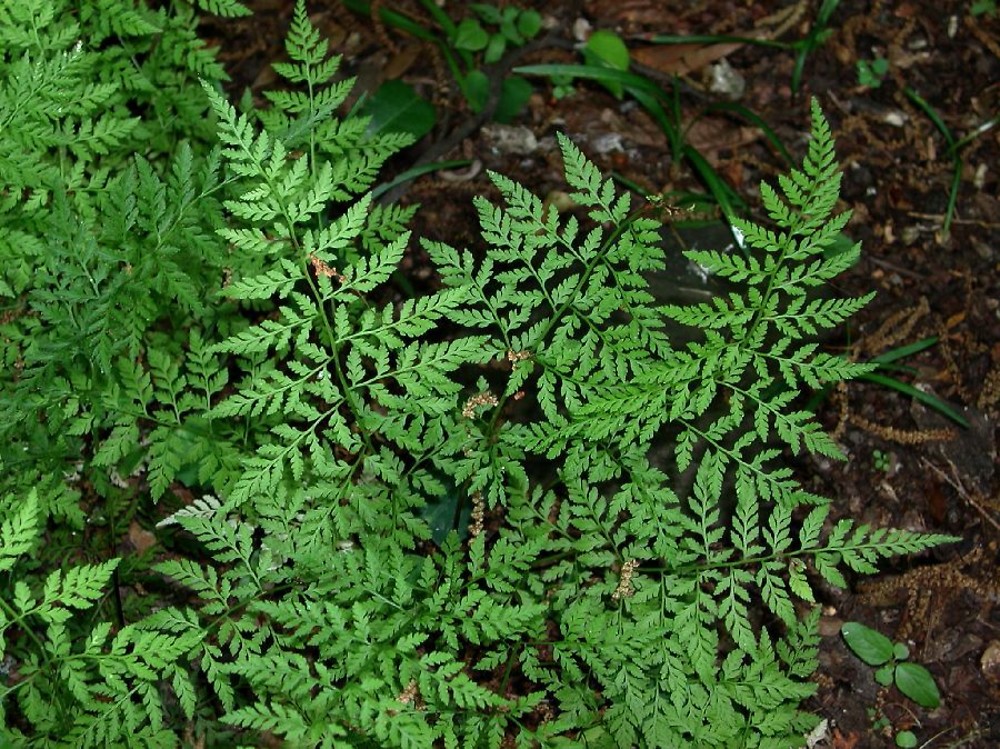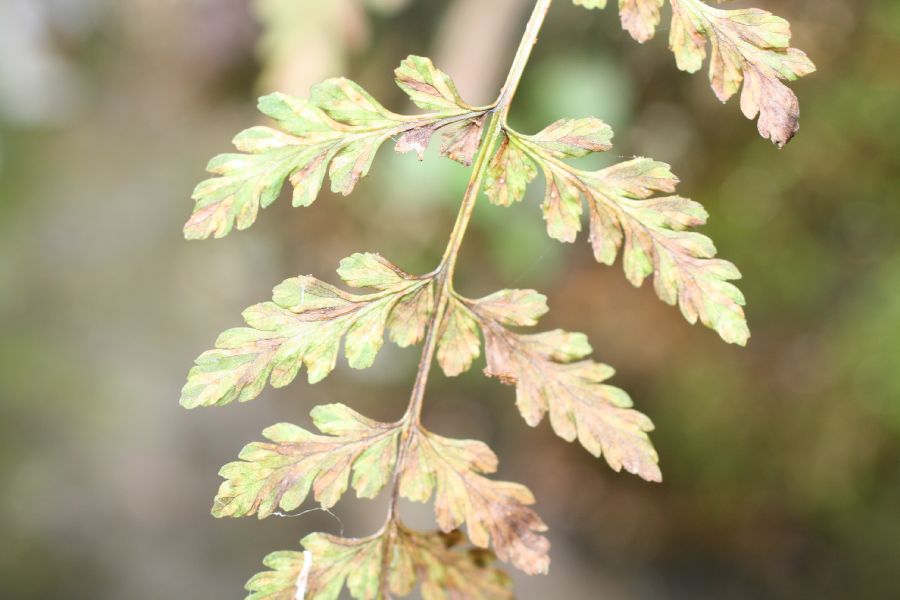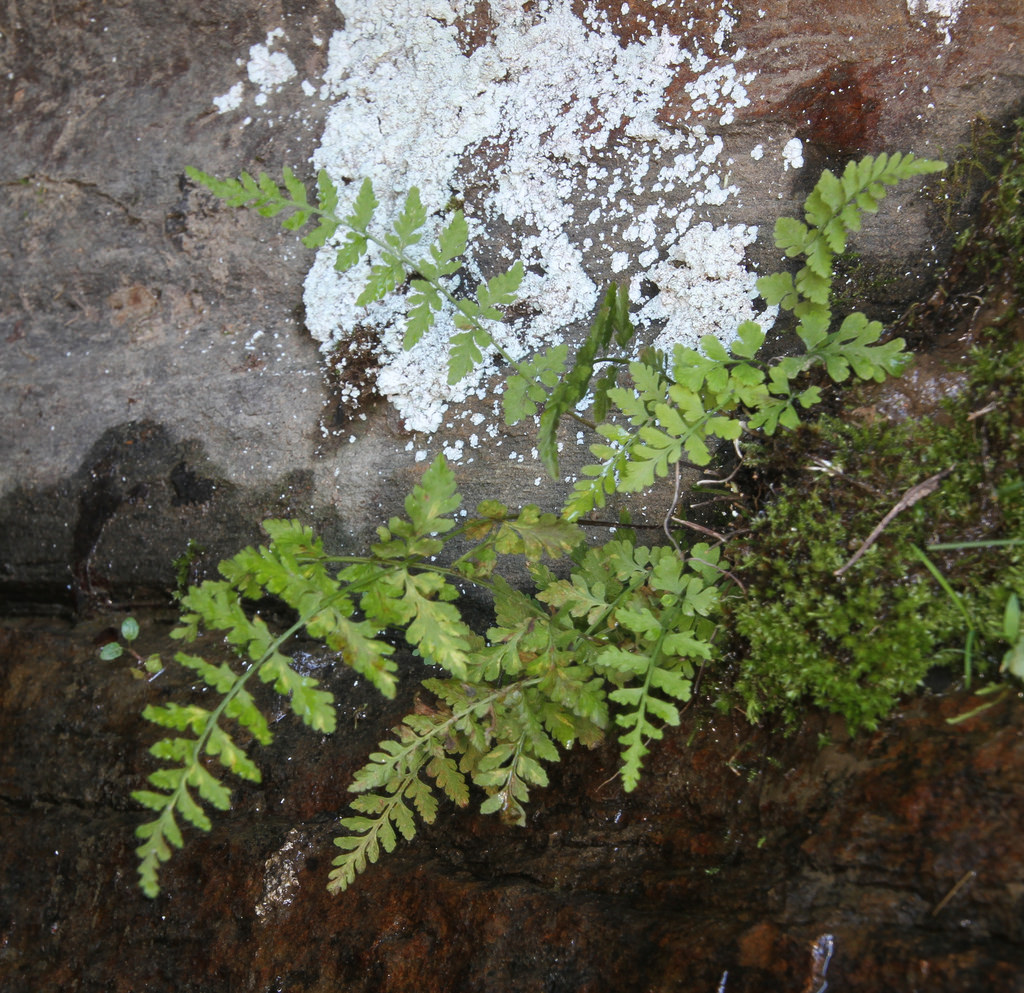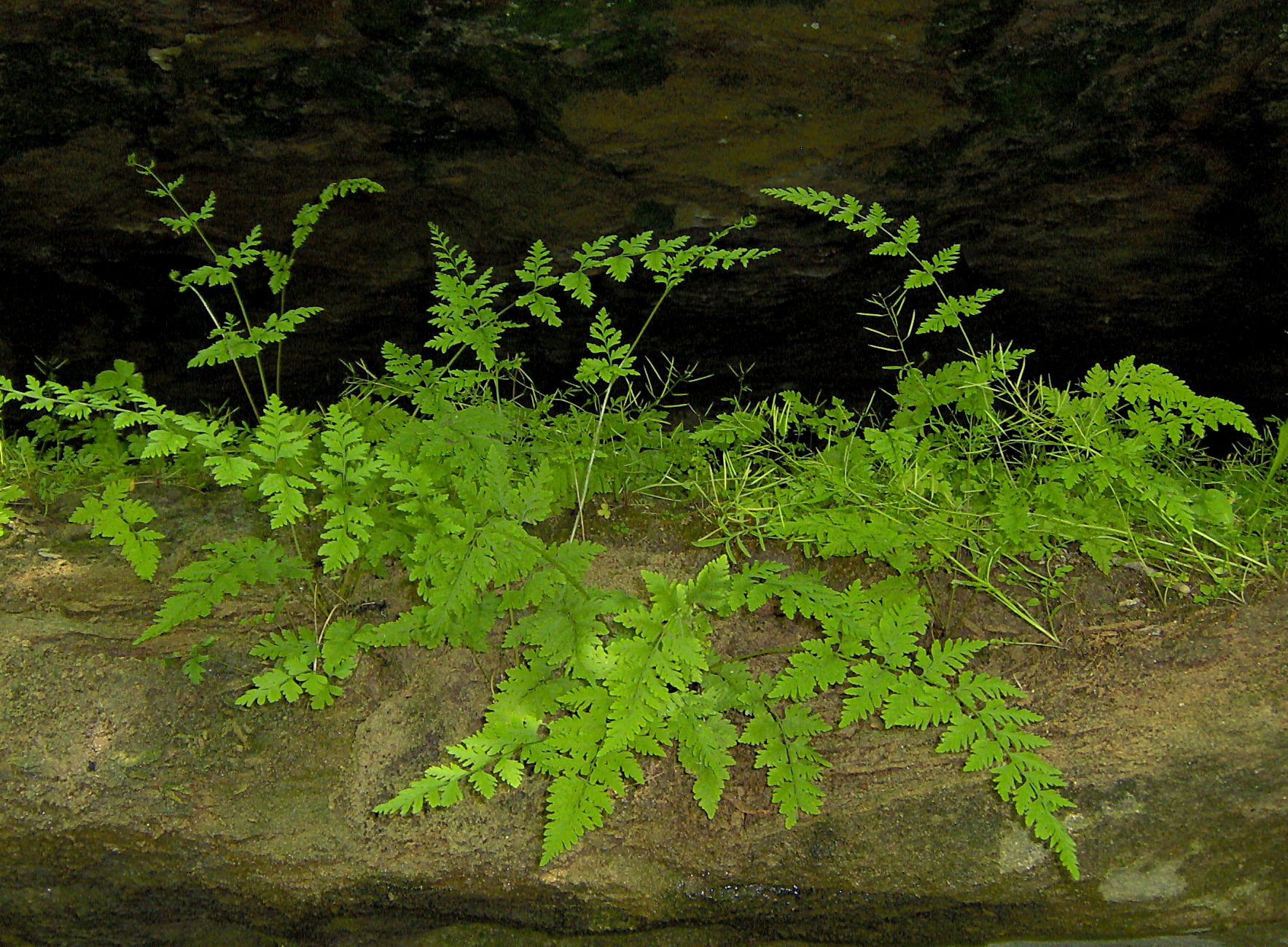Cystopteris tenuis (Cystopteridaceae) image 13406 at
Cystopteris tenuis is common in eastern North America and less frequent at the northern and western perimeter of its range.

Cystopteris tenuis (Mackay's fragile fern) Go Botany
They are circular and arranged in a row along one or both sides of the pinnule midvein about halfway to the pinnule edge. An egg to cup-shaped, translucent tissue (indusium) partly covers the spores and is attached on inner curve but usually withers away as spores mature. Spores ripen to dark brown or black. Not all leaves have spores.

Cystopteris tenuis (Cystopteridaceae) image 33829 at
Cystopteris tenuis is sometimes known as Mackay's bladder fern or Mackay's fragile fern. It was long considered to be a part of the superspecies for fragile ferns, as Cystopteris fragilis ( L.) Bernh. var. mackayi Lawson . C. tenuis in native habitat This species is an allotetraploid of hybrid origin (see Cystopteris hybrid complex ).

Cystopteris tenuis (Mackay's Fragile Fern) Minnesota Wildflowers
Cystopteris tenuis (Michx.) Desv. upland brittle bladderfern. Additional References; Flora of North America (CYTE7) Integrated Taxonomic Information System (CYFRM) Integrated Taxonomic Information System (CYTE7) Lady Bird Johnson Wildflower Center Native Plant Information Network (CYTE7)

Cystopteris tenuis (Mackay's Fragile Fern) Minnesota Wildflowers
Cystopteris fragilis × Cystopteris tenuis → Recognition of this nothospecies is generally missed during floristic inventories; it is most commonly misidentified as Cystopteris tenuis. It is intermediate between the two parental taxa, though on average larger than either, and possesses abortive spores.

Cystopteris tenuis (Mackay's fragile fern), Killingly, CT Flickr
Veins directed into teeth and notches. Indusia ovate to cup-shaped, without gland-tipped hairs. Spores spiny, usually 39--50 µm. 2 n = 168. Sporulating summer--fall.

Cystopteris tenuis (Mackay's fragile fern) Go Botany
Veins directed into teeth and notches. Indusia ovate to cup-shaped, without gland-tipped hairs. Spores spiny, usually 39-50 µm. 2n = 168. Phenology: Sporulating summer-fall. Habitat: Mostly on shaded rock and cliff faces but also occasionally on forest floors Elevation: 0-2800 m Distribution Generated Map Legacy Map

Cystopteris tenuis culvert Mackay's brittle fern growing i… Flickr
Cystopteris tenuis Viewer. Page Index. Actions. file_download Download image 117 x 176 (JPEG) 234 x 352 (JPEG) 469 x 704 (JPEG) 938 x 1408 (JPEG) 1876 x 2817 (JPEG) 3753 x 5634 (JPEG) add Save to portfolios. link Copy Link save Cite this Item. About this Item Collection Locality. About this Specimen. Catalog Number

Cystopteris tenuis (Mackay's Fragile Fern) Minnesota Wildflowers
Cystopteris tenuis (Mackay's Fragile Fern) Mackay's Brittle Fern, Upland Brittle Bladderfern Dryopteridaceae (Wood Fern) part shade, shade; average to moist; cliffs, talus slopes, ravines, rock outcrops, swamps, wooded banks, wooded slopes Pick an image for a larger view. See the

Cystopteris tenuis MacKay's fragile fern, growing in old m
Of the other Cystopteris species in the state, the frond is most similar to C. protrusaC. tenuis, both of which also lack any glandular hairs and have fronds broadest above the base, but both of which grow in soil. C. protrusa is never on rock, its stem is usually green to straw-colored throughout and has a rhizome covered in yellowish hairs tha.

Cystopteris tenuis (Mackay's fragile fern) Go Botany
Cystopteris Bernhardi, Neues J. Bot. 1(2): 26. 1805. Bladder fern, brittle fern [Greek kystos, bladder, and pteris, fern, alluding to the indusium, which is inflated when young]. 8 Cystopteris tenuis + Pinnae typically perpendicular to rachis, not curving toward blade apex; pinnae along distal 1/3 of blade deltate to ovate; margins of pinnae.

Cystopteris tenuis (Mackay's Fragile Fern) Minnesota Wildflowers
Discover thousands of New England plants Home Simple Key Full Key Dichotomous Key Help Genus: Cystopteris — fragile fern Past and present hybridization make the species of Cystopteris difficult to identify. Also, mature plants may be smaller than normal when growing in stressful habitats.

Maryland Biodiversity Project Upland Brittle Bladderfern (Cystopteris
Etymology Tenuis means slender. Description Rhizome: short-creeping, covered with old stipe bases, scales tan to light brown, lanceolate. Frond: 40 cm high by 6 cm wide, deciduous, monomorphic, blade/stipe ratio: 3:2. Stipe: stipes --3 to 8-- clustered at stem apex, grooved, dark brown at base, straw-colored above, sparsely scaly at the base.

Cystopteris tenuis (Cystopteridaceae) image 29475 at
Vermont Leaf divisions the leaf blade is compound (divided into leaflets) the leaf blade is twice compound (divided into leaflets, which are further divided into leaflets) Plant growth form the leaves grow from a rhizome growing at or below the ground Spore -bearing leaflets

Cystopteris tenuis (Mackay's Fragile Fern) Minnesota Wildflowers
Cystopteris tenuis Jump to a section: Classification | Citation | Source | Synonyms Distribution Map | No Photos Available Distribution Map: Based on vouchered plant specimens only. View county names by placing the mouse cursor over a particular county. ** Not applicable or data not available. Classification Citation

Cystopteris tenuis
Scientific Name: Cystopteris tenuis (Michx.) Desv. Other Common Names: Cystoptère grêle (FR) , Mackay's brittle fern (EN) , upland brittle bladderfern (EN) Kingdom: Plantae Phylum: Filicinophyta Class: